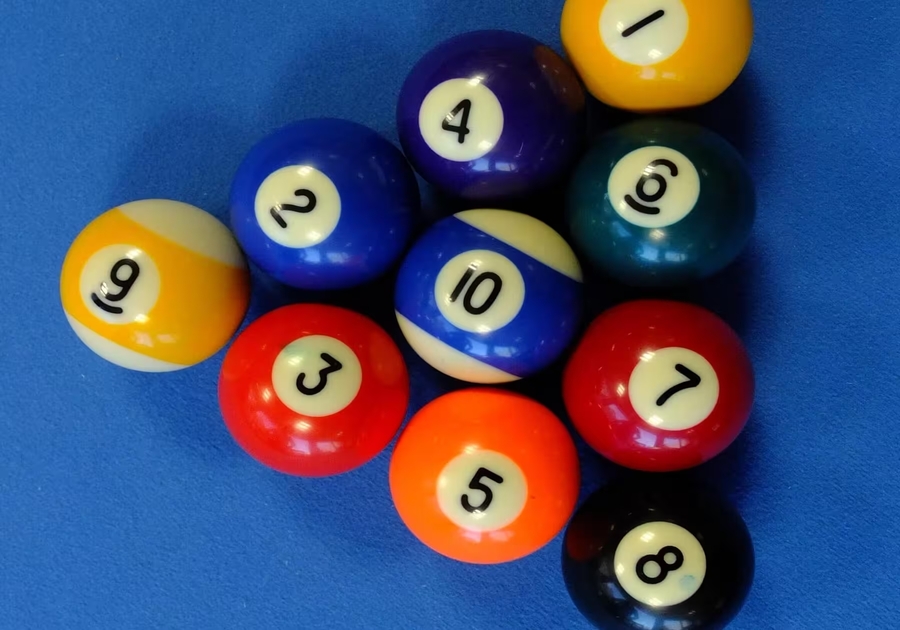How To Play 10 Ball Pool: Rules, Techniques, and More
Key Takeaways
- Before understanding how to play 10-ball pool, you must know about 10-ball pool rules. This article will cover everything you need to know about this game, including rules, techniques, and winning strategies.
- To help you enhance your skills, we will introduce some common mistakes of many pool players. Are you curious to find out more? Dive into the full article for all the insights!

How to play 10 ball pool
The Objective of 10-Ball Pool
The objective of 10-ball pool is to strategically sink a set of numbered balls in ascending order, culminating with the pocketing of the 10-ball to secure victory. This game combines skill, precision, and some tactical thinking, offering players a challenging yet rewarding experience. 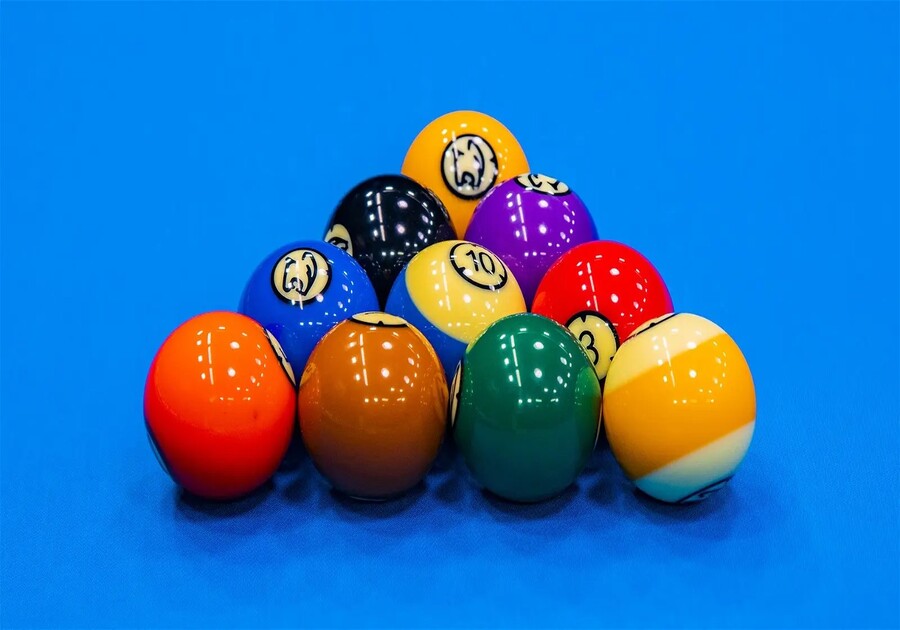
10-ball pool objective
Unlike other variations of the pool, 10-ball requires players to call their shots, adding an extra layer of strategy and finesse to each play. As you aim for the perfect shot, you must consider angles, ball positioning, and your opponent’s potential moves, making every game uniquely engaging.
Rules of 10-Ball Pool
Basic Rules
Under the 10-ball rules, the game begins with a rack arranged in a triangular formation, with the 10-ball placed at the center. The balls are numbered between 1 and 10, with the 1-ball positioned at the front, or apex, of the triangle, ensuring a uniform setup for every game.
The break shot is important for pool players, as it sets the stage for the rest of the game; the player must strike the 1-ball first, attempting to disperse the balls widely across the table.
After the break, players must sequentially pocket some balls in numerical order, starting from the lowest-numbered ball on the table. These 10 ball pool rules will add a layer of complexity, requiring accuracy and strategic planning to navigate the layout of the balls effectively.
Winning the Game
To win a game of 10-ball pool, a player must legally pocket the 10-ball. However, this can only be done after all preceding balls have been pocketed in the correct sequence. Fouls play an important role in the game, with consequences such as giving ball-in-hand to the opponent and allowing them to place the cue ball anywhere on the table. Common fouls include:
- Not striking any ball.
- Fail to hit the lowest-numbered ball first.
- Causing the cue ball to leave the table.
Calling shots is mandatory; players must indicate their intended ball and pocket before making a shot, ensuring clarity and fairness. These ten-ball rules prevent lucky, unintentional shots from counting, emphasizing skill and precision in every play.
Equipment Needed
You can not learn how to play 10 ball pool without gathering the necessary equipment below:
Pool Table
For a proper 10-ball pool game, a standard pool table is required. The table should typically measure 9 feet in length, with dimensions of 100 inches by 50 inches for the playing surface.
It features six pockets, one at each corner and one in the middle of each long side. The table is covered with a high-quality felt, designed to ensure smooth ball movement and accurate shots. 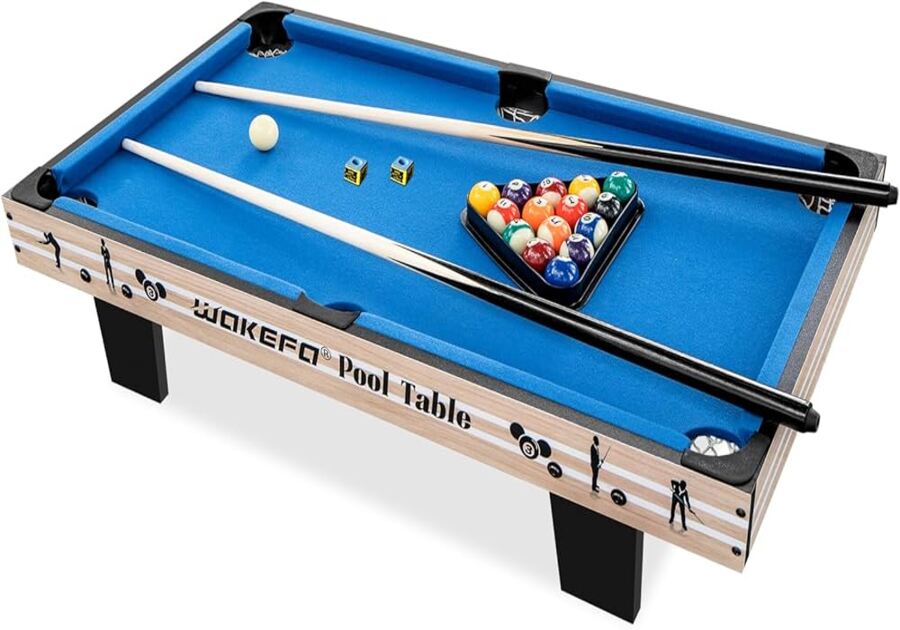
Pool table
The table’s rails and cushions must meet specific standards to provide consistent rebounds, crucial for the precise play demanded by the 10-ball pool.
Pool Cues
Pool cues are essential tools for players of all skill levels. Beginners might prefer shorter and lighter cues, around 18-19 ounces, to help develop control and accuracy. 
Pool cues
Intermediate and advanced players often choose cues weighing 19-21 ounces, weighing about 58 inches, providing a balance between power and precision. Some cues are designed with specific features, such as low-deflection shafts, which enhance accuracy by minimizing the cue ball’s deviation after contact.
Billiard Balls
The billiard balls used in the 10-ball pool are crucial to the game’s integrity and flow. A complete set includes 10 numbered balls, from 1 to 10, along with a cue ball.
Each ball is typically made of high-quality phenolic resin, ensuring durability and consistent performance. The balls are precisely crafted to be uniform in size and weight, usually measuring 2.25 inches in diameter and weighing around 6 ounces. 
Billiards ball
The cue ball, often white, strikes the numbered balls and is designed to maintain its integrity under frequent impacts. The balls’ vibrant colors and clear numbering help players easily identify and target them during the game.
How to Play 10 Ball Pool?
After understanding some 10-ball rules and gathering essential tools for this game, let’s learn how to play 10-ball pool.
Basic Techniques
To learn how to play 10-ball pool, you must learn from basic to advanced. That’s why 3 methods below can help you master the 10-ball game quickly:
Stance and Grip
A solid stance and proper grip are foundational to playing 10-ball pool effectively. When positioning yourself at the table, your feet must be shoulder-width apart, with your dominant foot slightly forward.
This stance provides balance and stability, allowing for more controlled shots. Your body should be comfortably aligned with the cue ball, and your head should be positioned directly over the cue stick for accurate aiming. 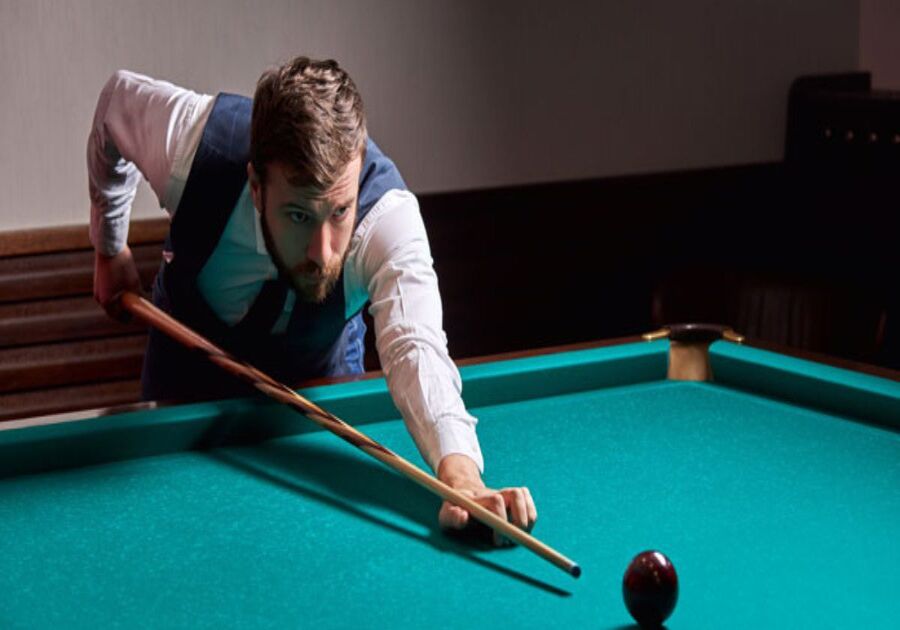
Stance & Grip
When holding the cue, use a relaxed grip with your dominant hand, ensuring your thumb and index finger form a loose V-shape around the cue. Your other hand should be used to create a stable bridge on the table, guiding the cue smoothly during your shot.
Cue Ball Control
Controlling the cue ball is crucial for setting up subsequent shots and maintaining a strategic advantage. Effective cue ball control involves understanding and applying various spins and speeds.
By hitting different parts of the cue ball (center, top, bottom, sides), you can influence its movement and behavior after striking the object ball. Top spin can help the cue ball follow the object ball, while backspin can make it reverse direction.
Cue ball control
Side spin (left or right English) can alter the cue ball’s path after hitting a rail. Mastering these techniques allows you to position the cue ball favorably for your next shot, making it easier to maintain the required sequence of pocketing balls.
Shot Execution
Executing accurate shots requires a combination of aiming, timing, and follow-through. When aiming, focus on the point of contact on the object ball that will send it towards the desired pocket.
Align your cue stick with this target, ensuring your body and head are properly positioned for a straight shot. During the shot, maintain a steady, smooth stroke, avoiding jerky movements. 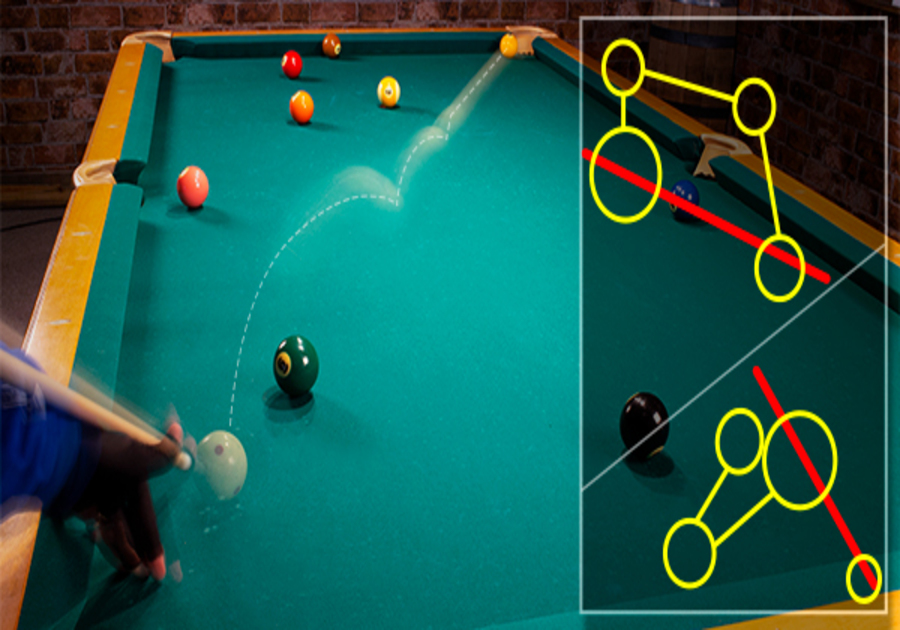
Shot execution
Follow-through is essential; your cue stick continues its motion after striking the cue ball, ensuring maximum accuracy and control. Practicing these elements regularly will help you develop a consistent and reliable shot execution, which is crucial for success in the 10-ball pool.
Advanced Strategies
After mastering the basic technique, let’s make your friends by improving your skills with our advanced strategies:
Position Play
Position play is about thinking several shots ahead, ensuring that each shot leaves the cue ball in a favorable position for the next. This requires a deep understanding of angles and cue ball control.
After pocketing a ball, the goal is to place the cue ball where it provides a clear, advantageous shot at the next lowest-numbered ball. Good position play minimizes difficult shots and maximizes scoring opportunities. 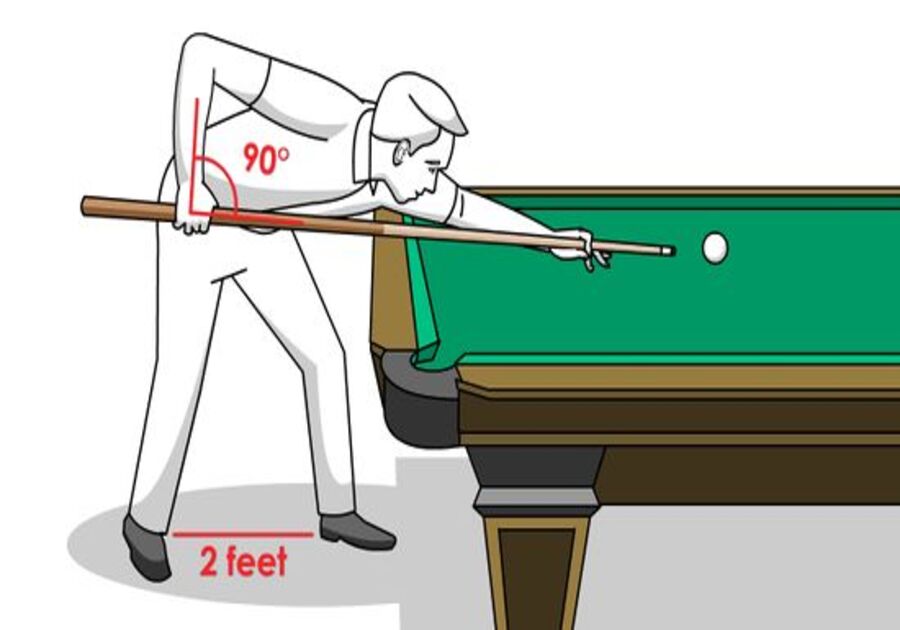
Position play
This involves using the cue ball’s natural roll, spin, and calculated speed to achieve the desired positioning. Advanced players often visualize and plan their sequence of shots to maintain control throughout their turn.
Safety Play
Safety play is a crucial defensive strategy in the 10-ball pool. When a direct shot isn’t viable, or the risk of missing is high, a player can choose a safety shot to make it difficult for their opponent to continue.
This involves intentionally positioning the cue ball and object ball in challenging spots, such as behind other balls (creating a snooker) or leaving the cue ball at a distance from the object ball. Effective safety play requires precise control and foresight, often turning the tide in a match by forcing opponents into making mistakes or fouls.
Breaking Strategy
A strong and effective break shot sets the tone for the entire game. Here are some tips for an optimal break:
- Aim for the 1-ball: Ensure your cue ball strikes the 1-ball first, positioned at the apex of the rack.
- Use power and control: A powerful shot can scatter the balls widely, but control is equally important to keep the cue ball from scratching (falling into a pocket).
- Position the cue ball: Place the cue ball slightly off-center to improve your chances of a successful break.
- Follow-through: Ensure your stroke is smooth and your cue follows through after contact, maximizing the energy transfer to the rack.
Common Mistakes and How to Avoid Them
Overhitting the Cue Ball
Overhitting the cue ball is a common mistake that can lead to losing control, making it difficult to execute precise shots and maintain good position play. When the cue ball is struck too hard, it can cause unexpected rebounds, resulting in poor placement for the next shot or even scratching the cue ball.
To avoid overhitting, focus on using a smooth, controlled stroke. Practice using less force while maintaining accuracy, aiming to balance power and control. This will help you keep the cue ball in a favorable position for subsequent shot
Misjudging Angles
Misjudging angles is a frequent error, especially for players still honing their skills. Accurate shot execution depends heavily on understanding and correctly predicting the angles at which balls collide and travel.
To improve your ability to judge angles, practice regularly by setting up various shots and observing the outcomes.
Use aids such as aiming systems or visual guides to help you better understand the angles involved. Over time, this practice will develop your instinctual feel for the correct angles, leading to more consistent and accurate shots.
Ignoring Safety Plays
Neglecting safety plays can be a costly oversight in the 10-ball pool. Focusing solely on offensive shots and attempting difficult pockets without considering the potential risks can give your opponent easy opportunities to capitalize.
To avoid this mistake, incorporate defensive strategies into your game. When faced with a challenging shot, consider opting for a safety play that positions the cue ball in a way that makes it difficult for your opponent to continue.
Balancing offensive and defensive plays allows you to maintain control over the game and reduce the chances of giving away easy points.
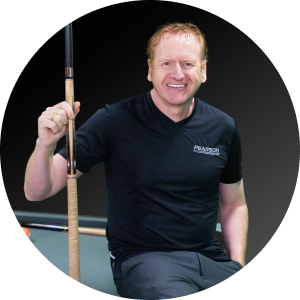
Dave Pearson
Dave Pearson, the world's leading pool entertainer, is renowned globally as the ultimate exhibition player.
Boasting 20 world records endorsed by the prestigious Guinness Book of World Records, Dave established a legendary history in the sport industry.

